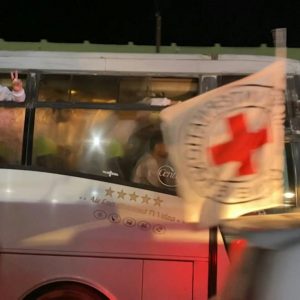Gaza health situation a ‘perfect storm for tragedy’: UN
Geneva, Switzerland – AFP
Fuel shortages, a lack of water and worsening sanitation in Gaza, along with attacks on health care and mass displacement, are creating “a perfect storm for tragedy”, the UN warned Tuesday.
Here are some key numbers highlighted by the United Nations:
– Impact on children –
Israel’s relentless bombing campaign and ground offensive has killed more than 13,300 Palestinians, including at least 5,600 children, according to the territory’s Hamas-run health ministry.
The World Health Organization said Tuesday that already around 160 children are killed every day in Gaza, and the UN children’s agency UNICEF warned that the number could skyrocket.
“If children’s access to water and sanitation in Gaza continue to be restricted and insufficient, we will see a tragic — yet entirely avoidable — surge in the number of children dying,” spokesman James Elder said.
– Dire water shortages, sanitation breakdown –
Elder said the daily minimum need in emergency situations was 15 litres (four gallons) of water per person, for drinking, hygiene and cooking, but that in parts of Gaza as little as three litres per day is available, and none on some days.
“We have then a perfect storm for the spread of disease,” he said, pointing to “a desperate lack of water, faecal matter strewn across densely-populated settlements (and) an unacceptable lack of latrines.”
He stressed the urgent need for sufficient fuel to be allowed into the territory, among other things, to get water pumps, desalination stations and waste management working again.
After weeks of no fuel entering Gaza, an agreement has been reached to allow 70,000 litres per day, but the UN says 200,000 litres are needed daily for humanitarian operations.
– Overcrowded shelters –
More than 1.7 million of Gaza’s 2.4 million inhabitants are estimated to be internally displaced within the enclave — nearly half of them children, the UN said Tuesday.
Nearly 900,000 of those displaced are staying in severely overcrowded shelters run by UNRWA, the UN agency that supports Palestinian refugees.
On average, there are 700 people to one shower unit and 150 people to a toilet in those shelters, Elder said.
– Hospitals –
The WHO said last week that only 10 of the territory’s 36 hospitals were still functioning, with the situation deteriorating since then. It said Monday there are no functioning hospitals in northern Gaza.
The WHO said it had been asked by health personnel to help evacuate three non-functioning hospitals in the north: Al-Shifa and Al-Ahli in Gaza City and the Indonesian hospital near the Jabalia refugee camp.
The WHO, which has described Al-Shifa as a “death zone”, helped evacuate 31 premature babies on Saturday.
But WHO spokesman Christian Lindmeier said Tuesday that two others had died prior to the evacuation.
Three of the evacuated babies were at a hospital in southern Gaza, while 28 arrived in Egypt on Monday.
Lindmeier said Tuesday that the WHO was making plans to bring out the remaining 200 patients and 50 health workers still stuck in Al-Shifa.
He said around 180 babies were born every day in Gaza, with more than 20 needing specialised care.
– Spread of disease –
The WHO warned that Gaza’s health system was struggling to cope amid an influx of casualties and sharp increases in diseases.
More than 72,000 cases of upper respiratory infections had been detected in displacement shelters, Lindmeier said.
There had also been nearly 49,000 cases of diarrhoea among children under five — 31 times the monthly average.
Cases of scabies, lice, chicken pox and skin rashes are also surging.
UNICEF said no cholera had yet been detected in Gaza, but stressed that an outbreak could see the number of children dying in Gaza rise “exponentially”.









